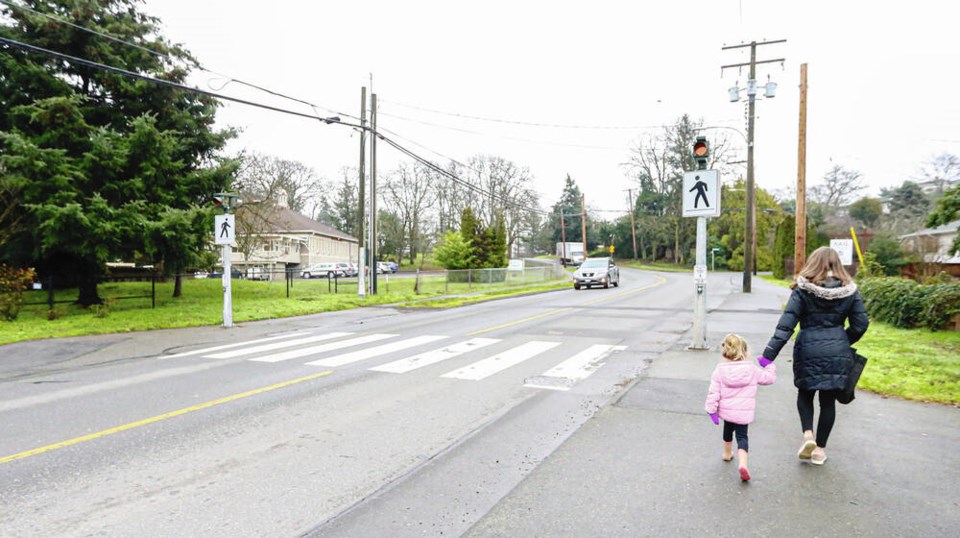Saanich’s streets aren’t safe for people outside of cars. According to ICBC, at least 68 pedestrians and cyclists were hit by cars in Saanich in 2020. These crashes aren’t just a statistic: they are kids on the way home from school, seniors crossing the street, people biking to work, and so many more.
On Jan. 10, Saanich council directed staff to explore a shortened time frame for completing the district’s Active Transportation Plan. This request followed the tragic death of a Saanich teenager on Cedar Hill Cross Road, a pedestrian fatality that illuminated just how dangerous our streets can be.
Deaths and injuries aren’t an inevitable consequence of driving. They are the result of the choices our municipalities make when designing streets. Saanich’s streets can become safer through a comprehensive network of active transportation routes for all ages and abilities (AAA). Yet, the current transportation plan report card shows Saanich is well behind its AAA targets.
Active transportation doesn’t have to be expensive or time-consuming. In a single month in 2020, Portland turned 160 kilometres of neighbourhood streets into safe routes for pedestrians and cyclists. In total, they spent under $100,000 Cdn on the effort.
Meanwhile, Saanich has a four-year plan to make similar changes to 25 kilometres of its street network. Two years into this goal, the district has not yet completed a single kilometre.
Across Canada and the U.S., municipalities are demonstrating that small investments in simple safety measures pay dividends for their communities. Neighbourhoods can quickly realize street safety with strategically placed traffic cones, planters and temporary barriers. Even a bucket of paint can create drastic improvements in short order.
Savvy planners in cities such as Portland, Montreal, Calgary and Austin have demonstrated how rapid deployment of inexpensive safety measures enlivens communities. Cities need not wait for expensive street repavings and comprehensive redesigns to make their neighbourhoods more livable.
They can test improvements with temporary infrastructure now. Then, when permanent upgrades come due, they will already know how to invest their money effectively.
Every year, more people in Greater Victoria regularly walk and cycle. Many are looking to adopt an active lifestyle, spend more time outdoors with their kids, reduce their carbon footprint, or save money. Regardless of their reason, the overall trend is clear.
Saanich has an opportunity to design safer streets, tackle climate change and create more livable neighbourhoods with quick, inexpensive investments. Until now, that opportunity has been squandered.
Council has shown their desire for safer streets: now the district must put their words into action.



